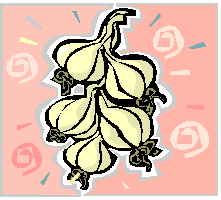

To send a message to an author, click on the author's name at the end of the article.
This Month in Ag Connection | Ag Connection - Other Issues Online
As some of you might (or might not) remember, Wendy Flatt, Livestock Specialist/County Program Director, headquartered in Howard County, came back from Iraq a few months ago. She took a temporary position with USDA as an Agriculture Advisor, and served her country for18 months in Kirkuk, Iraq, a province (which is the equivalent of a small state in the US) in the northeastern part of the country.
Kirkuk is an ethnically mixed area of Kurds, Turkomen, Arabs, and Christians. It is common for people from Kirkuk, especially in Kirkuk proper, to know at least two to three languages! According to some reports, Kirkuk could have 3 to 5% of worlds' oil reserves which contributes to the power struggle going on currently, especially between the local Arabs and Kurds, the two largest ethnic groups in the province.
The northern part of Iraq is considered semi-arid, not desert like the south, as the average rainfall in Kirkuk is between 10 and 12 inches of rain a year (the equivalent of Western KS/NE and eastern CO, only much hotter). Kirkuk's farmers raise barley, wheat, corn, sunflowers, vegetables, fruits and livestock. In Kirkuk, which is roughly half the size of Missouri, there were approximately 85,000 head of cattle, 600,000 head of sheep, a few goats, camels and water buffalo.
Iraq's farmers were just starting to learn about the "free market system" as under Saddam's regime, farmers were given fuel, fertilizer, seed, tractors, etc. to farm with. Farmers were basically the laborers and did not make their own decisions. The government told the farmers how to market, what to raise, how to reach their performance goals.

Wendy was part of a Provincial Reconstruction Team (PRT), which included people from the U.S. Departments of Defense, Justice, Energy, Agriculture, Army Corps of Engineers and State, along with the United Nations and USAID. Ms. Flatt was one of two female US agriculture advisors in the entire country and said her favorite part of being in Iraq was working with both the American's and Iraqis.
The work was hard, but Ms. Flatt noted she always felt appreciated and respected by her American and Iraqi colleagues, because she knew her work was part of a greater mission, which was helping stabilize Iraq. "If Iraqis have jobs, they are less likely to join the insurgency and groups like Al Qaeda" Ms. Flatt noted. "My main job was to plant seeds to start the process of modernizing their agriculture, which was decimated by years of Saddam's rule and war, I did this and hopefully the Iraqis will continue what I started. It is going to be a long slow process, but I saw glimmers of hope, especially amongst the younger Iraqis and the women."
Welcome Wendy back home!!
This Month in Ag Connection | Ag Connection - Other Issues Online
Feed supplies in many areas are tighter than normal. A "show of hands" crowd survey at a recent meeting had producers estimating this year's hay crop reduced between 10 and 50 percent of normal. With the on-going drought in the southern U.S., hay demand and prices continue to increase, thus winter feed costs appear to also be on the rise for local producers.
If producers are short of feed right now, the best way to reduce feed needs is to wean spring-born calves. This reduces cow dry matter intake by 1.5 to 2.5 pounds per day and also reduces their energy and protein needs. Additionally, weaning cows before they lose too much body condition means they won't have to add as much weight over the fall and winter, thus accounting for additional feed savings.
We have several feed resources at our disposal. Many producers chopped corn for silage. Due to reduced grain yields and potential nitrate issues, I am recommending sampling corn silage for nutrient content and nitrate concentration. In addition to forage nutrient analysis, many commercial laboratories can also do a quantitative nitrate test. If nitrate concentration is a concern in the silage, it can be limit fed without problems, but the concentration must be known in order to safely feed the silage.

An often underutilized feed resource is grazing crop residues. It may be cheaper to repair fences and haul water to cattle on corn stalks this fall than to buy hay. One note of caution with grazing corn stalks damaged by windstorms is that producers may need to strip graze the fields to prevent cows from overeating corn if there has been substantial ear loss. Assess the level of corn left in the field before turning out cows.
If winter annuals have been seeded, they can provide late fall grazing and early spring forage for grazing or hay.
Stockpiled fescue pasture will be valuable this year. The amount of grazing days provided by stockpiled pasture can be extended by strip-grazing the pastures. Portable electric fences can be placed to allow animals a week or less grazing area. After a few days to a week, advance the fence away from the watering source. There is no need to put up a back fence, since there will be no regrowth in the late fall and winter months.
Finally, buying or selling hay needs to be done on a weight basis, not a per bale basis. At $40 per bale, a bale weighing 1,100 pounds sells for $72.73 per ton while a bale weighing 1,300 pounds sells for $61.54 per ton. That $11.19 difference per ton is either lost revenue or unnecessary expense depending on whether you are selling or buying the hay.
Source: Gene Schmitz, MU Extension Livestock Specialist
This Month in Ag Connection | Ag Connection - Other Issues Online
It appears that even a bulwark such as GPS can be put in jeopardy if somebody is not watching. Over the last several months, there has much talk in the GPS world about a proposal from a company called LightSquared to the Federal Communications Commission (FCC) to establish a national broadband internet system. While this is a noble effort and the principle represents a potential boon to rural America, the technical implementation plan as proposed will likely have a catastrophic impact on the agricultural, construction and surveying communities throughout our country that rely heavily on high precision GPS technology.
What is the proposal? - LightSquared has made a request to the FCC to use a certain frequency band for land-based broadband communications similar to current cellular signals and recognized by many as 4G LTE. This frequency band, which is adjacent to one of the GPS satellite broadcast frequencies, had previously been used for satellite communications. Because LightSquared is using a landbased system, they will be broadcasting at an enormously higher power level than the GPS satellite signals adjacent to it. Because of this sheer power on a close frequency and the fact that most of the high precision receivers currently in use have antennas with sensitivity in the proposed band, the LightSquared signals will "bleed" into the GPS frequencies either adding noise and degrading the quality of the signal or completely masking the GPS signals rendering receivers useless.

The effect on GPS receivers - LightSquared has stated that their system would only affect a small percentage of GPS receivers. Most GPS experts do not agree. The vast majority of GPS receivers in use today are cell phone or personal units used for automobile navigation and outdoor recreation, which may experience only a limited impact from the LightSquared broadcasts (although some data have shown that they too may be rendered inoperable near transmission towers). The equipment that will be most severely affected are the high precision receivers that are used heavily in agriculture, construction and surveying. Tests have shown that many of these GPS units will be rendered completely useless anywhere within about a mile or so of the LightSquared transmission towers. The GPS developers have indicated that if a solution could be designed to separate the signals (and many are skeptical that it could be done at reasonable cost), current users would likely need to purchase new equipment, and that the new equipment will probably not perform as well as the current equipment they are using. In the agricultural industry, implementation of this system will be potentially devastating to anyone that relies on high precision GPS technology for variable rate application, guidance, autosteer, and automatic section control. It will be a giant step backward in our environmental protection and input use efficiency efforts of the last two decades.
Status of the FCC decision - The FCC appointed a working group to look into the matter. Their report was published on June 30, 2011. The U.S. GPS Industry Council summarized the findings of that extensive report by stating that, "Such a network would cause unacceptable interference to GPS operations, wiping out an installed base of over 500 million units used in a wide array of public safety, aviation, industrial and consumer applications." At this point the FCC has not rendered a final decision on the proposal and the answer to the question is GPS in jeopardy is still not known.
Submitted by:Kent Shannon, MU Extension Nat Resource Engineering Specialist
This Month in Ag Connection | Ag Connection - Other Issues Online
Who would dream of planting a vegetable on Nov. 1st? Someone who wants to grow garlic and understands its planting is similar to tulips, not other vegetable crops. Raising garlic in Missouri is very rewarding given some advance planning, as it a 9 or 10 month crop.
Most garlic tonnage in the U.S. is grown in the mild climate of northern California. Varieties adapted to mild climates and then grown in cold climates often do not perform well and usually develop a very "hot" flavor. Garlic is an adaptable species, however, and over thousands of years; varieties have been selected that grow well in cold climates, often with better garlic flavor than the varieties grown in mild climates.
Variety Selection - Garlic varieties can be broadly classified into two main categories: hardneck and softneck. Hardneck varieties produce a flower stalk while soft neck varieties do not. Climate can have a significant impact on garlic flower stalk formation as well as garlic taste. For example, a variety may be considered a softneck in one location, but in other locations it may produce a flower stalk. Within each variety are named selections or strains. Since there is no standardization, some garlic seed producers will occasionally rename a particular selection, leading to more confusion. Try a few different varieties/selections; select those that do well and you like the flavor.

Hardneck varieties (Allium sativum var. ophioscorodon) produce a flower stalk, or, technically, a scape, and are often termed "topsetting" or "bolting" varieties. Typically, hardneck garlic varieties have four to 12 cloves surrounding the flower stalk. Because of the hard flower stalk, they are difficult to braid. Another disadvantage is that some hardneck varieties do not store well and may either start to form roots or start to dry out within a few months after harvest. Two of the advantages of hardneck garlic are: 1) cloves are more uniform in size and 2) the clove skins are much easier to remove (this is the main reason they have a shorter shelf life). Typical hardneck groups (and their corresponding varieties) are: "Rocambole" (Capathain, Spanish Roja), "Purple Stripe" (Metechi, Persian Star), and "Porcelain" (Georgian Crystal, Music).
Softneck varieties (Allium sativum var. sativum) do not produce a seed stalk. These are among the varieties that are commonly used in California for commercial mass production. There are, however, some softneck varieties that are suitable for cold climates. Softneck varieties are considered to be the most domesticated varieties due to minimal flower stalk and (generally) being productive than hardnecks because all the energy goes to producing a bulb rather than both a bulb and flower stalk. Each bulb of a softneck variety generally contains between 10 to 40 cloves arranged in multiple layers somewhat like an artichoke. Softneck garlic generally has a much longer shelf life than hardneck garlic and typically can be stored for six to eight months without significant deterioration. They also are easy to braid. Typical softneck groups (and their corresponding varieties) are "Artichoke" (Inchelium Red) and "Silverskin" (Idaho Silverskin).
Soils and Fertilization - Garlic grows best on well-drained soils high in organic matter. Raised beds should be considered, as garlic is establishing and growing through the time of the year when soil in Missouri typically becomes saturated for extended periods. Drought or excessively wet conditions will reduce yields. Compost applied and incorporated at a rate of 1 to 2 pounds per square foot is an excellent soil amendment, especially on low organic matter soils. One pound (about 2 cups) of general fertilizer like 5-10-10 per 50 square feet should be added if compost is not used. The optimum soil pH for garlic is between 6 and 7. Liming is recommended if the pH is less than 5.8. Rates to apply should be based on soil test recommendations. Prior to planting, soils should be well tilled to provide a loose growing bed for bulb growth. In the spring, a high nitrogen fertilizer should be applied, ideally side dressed and incorporated, at a rate of ½ pound (one cup) per 50 square feet.
Planting- Cloves of the bulb are used for propagation. Garlic seedcloves for first time growers can be purchased as bulbs from local garlic growers or garlic seed producers who distribute nationally. Garlic Seed Foundation maintains a list of garlic vendors. http://www.garlicseedfoundation.info/classifieds.htm
Time of planting is critical since both optimum shoot and bulb development require a cold treatment. Garlic should be planted in the fall - usually within one to two weeks after the first killing frost (32°F). For Missouri this is normally at the end of October or early November, similar to tulip planting. Ideally, roots should be developing and shoots should be emerging from the clove but not above the soil at the time of the first hard freeze (28°F).
Cloves are usually planted six inches apart. If more than one row is planted, one foot between rows is sufficient. The amount of garlic to purchase will depend on the area to be planted, spacing, and variety. Generally, there are about 50 cloves per pound of cloves. Garlic spaced at six inches for 100 feet of row length will require approximately four pounds of cloves or four to five pounds of bulbs. Generally, seedcloves from one pound of garlic bulbs will yield between four and eight pounds of harvestable bulbs.
Individual cloves should be separated from the bulb the day of or up to two days before planting. Cloves separated for longer than two days tend to dry out. Generally, larger cloves from larger bulbs will produce the largest bulbs. The base of the clove should be planted two to three inches below the soil surface with the pointed side up.
Mulching - Garlic roots and shoots can tolerate freezing conditions provided that sudden drops in temperature do not occur. Therefore, within three to five weeks after planting, rows should be covered with a three-inch to four-inch layer of weed seed-free straw mulch to moderate soil temperatures and minimize excessively fluctuating temperatures in the winter and early spring. This mulch also will help control weeds during the growing season. Alternatively, floating row cover (lightweight spun bound polyester) can be used. Mulch can be removed in the spring after the threat of hard freezes is over, generally the second week of March. Garlic shoots can tolerate air temperatures as low as 20 degrees Fahrenheit without damage. To be continued!
The authors would like to recognize the article 'Growing Garlic in Minnesota' by University of Minnesota Extension for substantial use of content.
Source: James Quinn, MU Extension Horticulture Specialist and Parman Green, MU Extension Ag Business Specialist
This Month in Ag Connection | Ag Connection - Other Issues Online
Publishing Information
Ag Connection is published monthly for Northeast and Central areas of Missouri producers and is supported by the University of Missouri Extension, the Missouri Agricultural Experiment Station, and the MU College of Agriculture, Food and Natural Resources. Managing Editor: Mary Sobba.